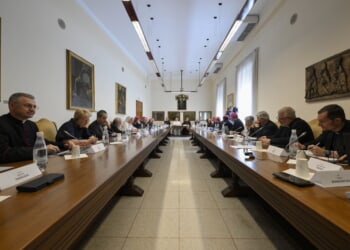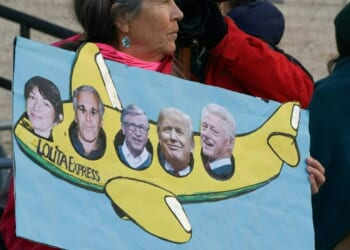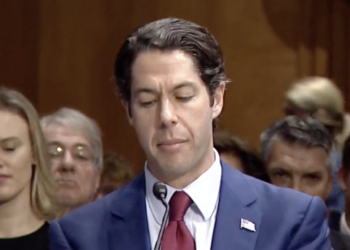As we commemorate the 80th anniversary of the end of the Second World War, we must never forget those responsible for igniting that supreme example of human aggression and suffering. Conventional histories point to Japan’s aggression in East Asia and its attacks at Pearl Harbor and elsewhere on December 7, 1941, and Germany’s aggression in central and eastern Europe, culminating in its invasion of Poland on September 1, 1939. Often overlooked or downplayed, however, is Soviet leader Josef Stalin’s role in engulfing the world in total war. On August 23, 1939, Soviet foreign minister Vyacheslav Molotov and German foreign minister Joachim von Ribbentrop negotiated the Nazi–Soviet non-aggression pact (which was actually signed at 2:00 am on August 24th after more than 10 hours of talks), whereby the two totalitarian powers agreed to start the European phase of the Second World War. August 23, 1939, like December 7, 1941, is a date that should live in infamy.
Throughout much of 1939, British diplomats had made approaches to the Soviet Union in an effort to form a coalition of powers against Germany. Germany, meanwhile, had entered talks with Japan, which had engaged in border conflicts with Soviet forces as early as May 1939. In mid-August of that year, Germany and the Soviet Union opened political discussions on the future of Eastern Europe. It soon evolved into proposals for a non-aggression pact that included economic clauses, agreements to exchange domestic political dissenters, and the geopolitical division of Eastern Europe.
The Pact opened the way for both countries to invade and divide up Poland.
The Pact opened the way for both countries to invade and divide up Poland. Germany invaded on September 1, 1939, while Soviet forces invaded eastern Poland on September 17, 1939. Two days later, in Brest-Litovsk, the Hammer and Sickle flew alongside the Swastika as a symbol of the fourth partition of Poland. The Pact also enabled Stalin to deal more safely with Japan. After the signing of the Pact, Soviet forces under the command of Gen. Georgy Zhukov defeated Japanese forces near the Mongolian border. The Pact’s “secret” clauses placed the Baltic States, Finland, and Bessarabia in Stalin’s sphere of influence. The Soviets occupied and subsequently annexed the Baltic states and invaded Finland in 1940.
As Paul Johnson noted in Modern Times, the Nazi–Soviet Pact “was a simple aggression pact against Poland.” In the early morning hours in the Kremlin after the signing of the Pact, Johnson wrote, the room “resembled nothing so much as a congregation of rival gangsters, who had fought each other before, and might do so again, but were essentially in the same racket.” Stalin agreed to fuel Hitler’s war machine with raw materials: oil, tin, copper, zinc, rubber, iron ore, manganese, cotton, and grain. Stalin also ordered his subservient communist parties throughout the world to reverse their anti-Nazi positions and to sabotage the war efforts of Germany’s enemies. (RELATED: Harry Truman at Potsdam — As Naïve As FDR)
For Poland, the August 23rd Pact began its 50-year descent into the Hell of totalitarian despotism under Nazi and Soviet rule. Poles (and Jews) filled Hitler’s death camps and slave labor camps, and Stalin’s Gulag. Nikolai Tolstoy, in his book Stalin’s Secret War, called the August 23rd agreement the “pact of blood.”
A proper remembrance of August 23, 1939, must include a recognition that it was Hitler and Stalin who started the European phase of the Second World War. The man whom Franklin Roosevelt referred to as “Uncle Joe Stalin” was Hitler’s accomplice in setting Europe ablaze. And when that terrible war was over and Hitler was dead, Stalin started the Cold War, which claimed countless lives in wars in China, Korea, and Vietnam, and which spread communist repression throughout Eastern Europe, East and Southeast Asia, parts of Africa, the Middle East, the Caribbean, Central America, and elsewhere. August 23, 1939 — a day of infamy, indeed.
READ MORE from Francis P. Sempa:
The Organizer of Victory: Frank S. Meyer






![Florida Man With Violent History Arrested for Choking a Cop [WATCH]](https://www.right2024.com/wp-content/uploads/2025/06/Eleven-Stabbed-in-Attack-at-Salem-Homeless-Shelter-Across-From-350x250.jpg)








